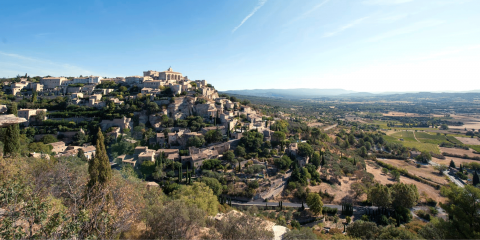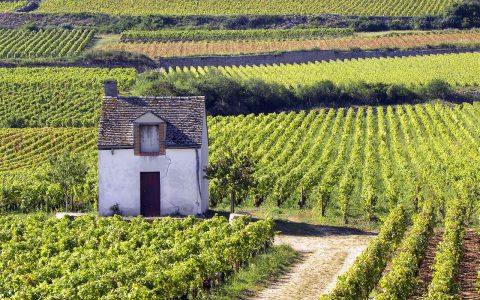Vines 102:
More Burgundy Wine
![]() While expanding your palate is a worthwhile endeavour in its own right, at The Slow Road we believe it’s made all the more rewarding when you have a sense of the history behind the bottle.
While expanding your palate is a worthwhile endeavour in its own right, at The Slow Road we believe it’s made all the more rewarding when you have a sense of the history behind the bottle.
And when it comes to Burgundy wine, there’s a rich history indeed—too rich for one blog post, in fact. Below, we continue the introduction to Burgundy wine we began in Vines 101: Burgundy with a primer on Burgundy’s grapes and grades of wine.
Grand Cru Appellation
Known as the greatest wines (although you might think Premier Crus should be, given their name). Again, over the centuries, certain plots of land consistently produced stupendous grapes for wine—presumably because of their very particular exposure, soil and drainage. There are only 32 of these Clos in Côte d’Or, and many of them are tiny.
Reading Burgundy Wine: Grand Cru Labels
 The Clos are considered to be so well known that generally the village name (around which the Clos is located) is no longer put on the label. What you will see on these labels is simply the name of the specific Clos and then the marking “Grand Cru.” Examples include La Tâche Grand Cru, Le Montrachet Grand Cru, and Corton-Charlemagne Grand Cru.
The Clos are considered to be so well known that generally the village name (around which the Clos is located) is no longer put on the label. What you will see on these labels is simply the name of the specific Clos and then the marking “Grand Cru.” Examples include La Tâche Grand Cru, Le Montrachet Grand Cru, and Corton-Charlemagne Grand Cru.
The grade officially given to each vineyard is practically set in stone, despite the actual quality of the wine from year to year. The appellation laws also strictly control the time of harvest, as well as the maximum yields for each acre, in order to limit the quantity of wine produced and thus increase the quality (and maintain the reputation) of Burgundy wine.
The last two bits of information you’ll want to pay attention to on the bottle’s label are the year and the name of the winemaker. The year is important, of course, as weather always affects the quality of the wine enormously. For anyone truly interested, there are all kinds of books out there that rate the millésimes (vintages) of the past century.
The grade given to each vineyard is practically set in stone, despite the quality of the wine from year to year.
Finally, there is the winemaker. Any one of the plots of land described above can and generally will be divided into small pieces owned by several different winemakers. (It’s rare for one Clos to be owned by only one person. When this is the case, it’s called a monopole [monopoly] and is generally marked on the bottle as well.) Although where the grape grew does have an enormous influence on the quality of a wine, a terrible producer can take great grapes and still make terrible wine. Similarly, a great producer can take decent grapes or a difficult year for weather and have a very positive effect on the quality of the wine. The best way to know producers is, again, to refer to books or, even better, go to Burgundy and start tasting!
Experience Burgundy With B&R
Scheduled Biking Group Trip
To Burgundian locals, time is measured by the season. On our Burgundy Biking trip, it’s by the kilometre, the meal and the vintage. We fell in love with this place 30 years ago and have made it our second home ever since. One visit, and you’ll understand why.
DETAILED ITINERARYSelf-Guided Walking Trip
What’s red and white and Michelin-starred all over? Walk through the world’s most famous vineyards on our Burgundy Self-Guided Walking trip. Excellent hotels, show-stopping cuisine and ecstatically good wines: it’s your time to step, sip, and savour.
DETAILED ITINERARYPremier Cru (or 1er Cru) Appellation
 Over time (and we’re talking about centuries here), it was noted that certain plots of land (or Clos) produced consistently better grapes. In 1934, when the Burgundian appellation system was rendered official, these Clos were given the rating of Premier Cru. The wines are made entirely from grapes that grow in that specific Clos. You’ll recognize these wines because the label will have the name of the village and then also the marking Premier Cru or 1er Cru. Often, the wine will also have the name of the specific Clos, as each of these has its own terroir, or characteristic flavour. Examples include Volnay 1er Cru, Beaune Premier Cru, Les Teurons and Pommard Premier Cru, Clos des Épeneaux.
Over time (and we’re talking about centuries here), it was noted that certain plots of land (or Clos) produced consistently better grapes. In 1934, when the Burgundian appellation system was rendered official, these Clos were given the rating of Premier Cru. The wines are made entirely from grapes that grow in that specific Clos. You’ll recognize these wines because the label will have the name of the village and then also the marking Premier Cru or 1er Cru. Often, the wine will also have the name of the specific Clos, as each of these has its own terroir, or characteristic flavour. Examples include Volnay 1er Cru, Beaune Premier Cru, Les Teurons and Pommard Premier Cru, Clos des Épeneaux.
Regional Appellation
The label says something quite general in terms of region; for example, “Bourgogne Hautes Côtes de Nuits” or even just “Bourgogne” (meaning that all you are guaranteed is that the grapes grew somewhere in Burgundy). This is the least specific of labels, and the wine is generally a decent table wine, but nothing more—and certainly not the epitome of Burgundy wine.
Village Appellation
The grapes all grew in vineyards around one specific village, and the label will have the name of that village on it. These are quite nice wines and generally have a flavour typical of the soil from around that particular village (e.g., Volnay wines, though all made in the same manner and from the same grapes as Pommard wines, are known to be lighter and fruitier than the intense, concentrated Pommards). Examples include Pommard, Beaune and Gevrey-Chambertin.
MORE FROM France + Burgundy

Grape Harvesting in Ventoux
France
The Top 5 Hiking Routes in Provence and Cote d’Azur
Provence
With Vineyards, Beaches, and Quaint Villages, Île de Ré Is France’s Best-kept Secret
France
Photo Diary: A Sunday in Provence with B&R Guide Tatjana Buisson
Provence
5 Ways to Relive the Renaissance in the Loire Valley
Loire Valley
The Best Luxury Hotels in Paris: From Classic to Contemporary
France
Secrets of the Seine
Île-de-France
6 Reasons Why You Need to Visit Normandy, France
Normandy
10 Best Markets & Shops in Provence
Provence
Bordeaux Nouveau: France’s Coolest City Right Now
Bordeaux
Falling Head Over Heels for Burgundy
Burgundy
The World’s Best: Top 15 Bordeaux Wines
Bordeaux
Rediscovering A Classic: Burgundy
Burgundy
Reading for the Road: Our 5 Favourite Books About Bordeaux
Bordeaux
The Pleasures of Southwestern France
Bordeaux
Normandy’s Showstopper: Mont Saint-Michel
Normandy
Reading for the Road: Our Favourite Books About Normandy
Normandy
Abbaye de la Bussière: English Hospitality in the Heart of France
Burgundy
Secrets of the Loire Lifestyle
Loire Valley



